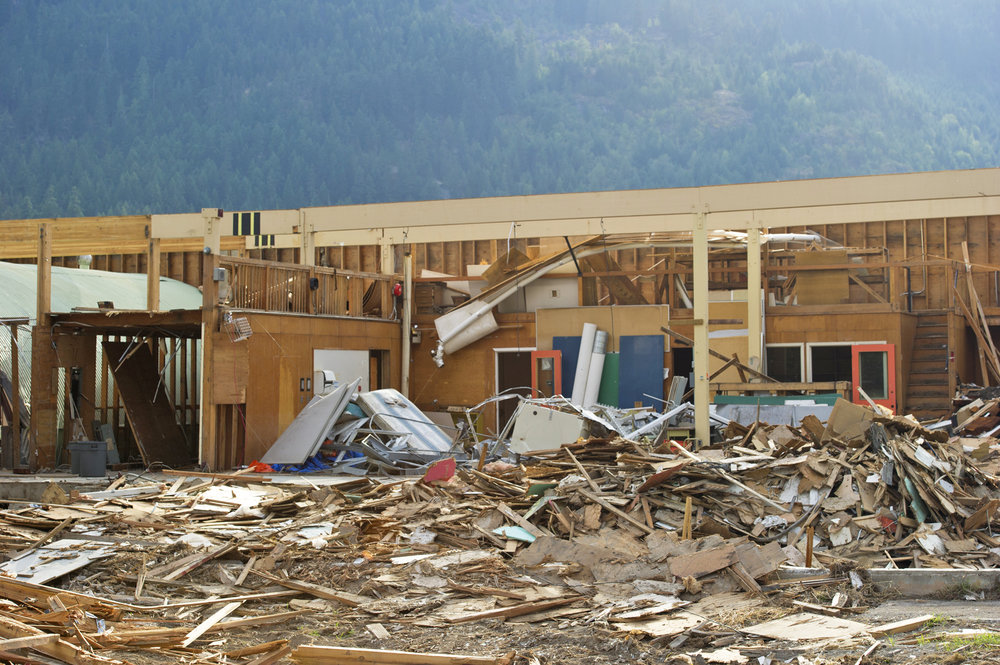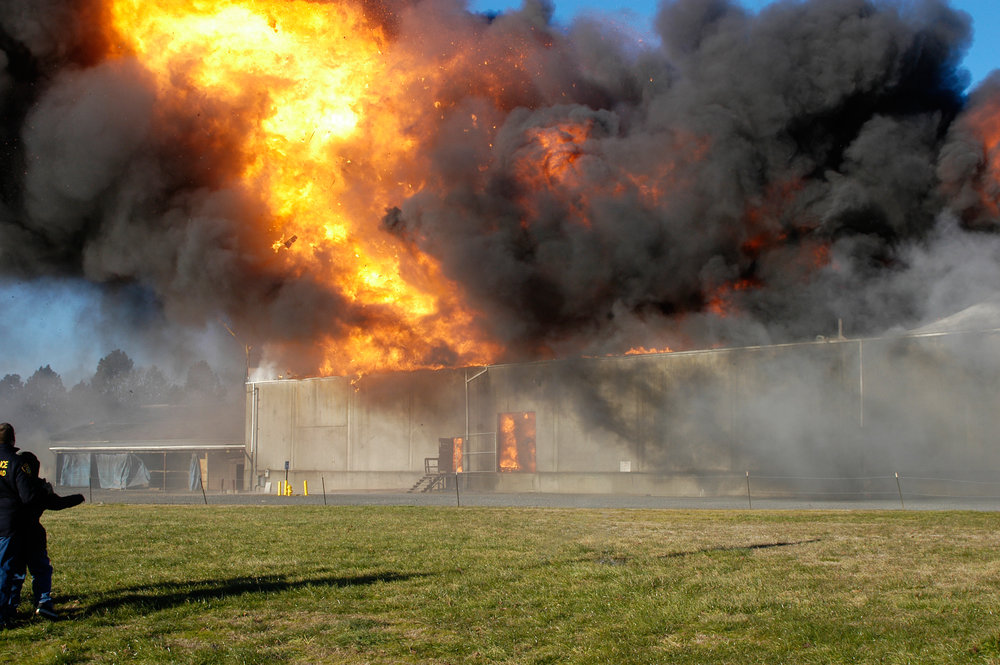Wasp Barcode Technologies: The Barcode Solution People
Four Things You MUST Think About Before a Disaster Strikes Your Business

Remember that time when the tornado sirens were blaring and you didn’t take cover?
Why was that?
Did you think the odds were in your favor and it wouldn’t happen to you?
Hopefully, you were right. If you were, don’t get over confident. Natural disasters can strike at any time, leaving your small business in ruins. If that happens, you need to be prepared, or the loss could devastate the business, leaving it with a permanent closed sign on the door.
According to the
Federal Emergency Management Agency, some 40 percent of small businesses are unable to resume operations after a natural disaster. Why? The
U.S. Small Business Administration cites that small businesses are often the most unprepared when it comes to emergencies. To avoid being part of that statistic, develop a natural disaster preparedness plan and implement it.

Some 18,700 Louisiana businesses were impacted by hurricanes Katrina and Rita, while 265,000 New York businesses were affected by
Superstorm Sandy, and 6,133 businesses in Moore, Oklahoma were damaged by a single tornado. Seventy-five percent of these businesses were considered small businesses. While all faced a tumultuous recovery, the businesses with disaster recovery plans were several steps ahead of those without such plan.
HOW TO CREATE YOUR DISASTER PLAN
Make a plan. Only 38 percent of small businesses have a formal
disaster preparedness plan in place. Gather employees for a sit-down meeting and put pen to paper. Don’t know where to start? The U.S. Small Business Administration provides
resources to guide small businesses in developing
disaster preparation and response plans. When all bases are covered, develop an action chart within the plan. This is a who does what in the event of an emergency. Make sure all employees have a copy of the document and make a point to review it on a quarterly basis.
[Tweet "Only 38 percent of small businesses have a formal disaster preparedness plan in place."]
Carefully consider these four factors when developing your plan:
1. Employee Safety
First and foremost is safety. Employees are the company’s biggest asset and making sure all are OK is the first priority, whether the disaster happened during business hours or off the clock.
If the disaster occurs during work,
have an evacuation plan and a back-up route in case the first one is not practical in light of the disaster. If your business has customers on site, they must be communicated with, as they will not know the evacuation plan. In the event of severe weather, a
shelter location should be determined. Also, consider having a backup generator in the event of a long power outage.
A communication strategy, whereby a telephone tree is implemented, is key to keep abreast of each employee’s status, as well as the business itself. You cannot rely on cell or landline phones, as cell towers and telephone lines are often impacted by the disaster. In many cases, satellite phones or two-way ham radios will serve you well. Satellite radios however, are quite costly and will likely only be used in an emergency. Ham radios though, are the go-to communication method for groups like the
Amateur Radio Emergency Service and other emergency responder groups.
Create a survival kit and store it in the location deemed as the severe weather shelter. The kit should include bottled water (enough for a gallon per day per person), flashlight, batteries, non-perishable food, weather radio, blankets, first aid kit, garbage bags and anything necessary for the special needs of individual employees.

2. Business Insurance
Make it a point to
review your company’s insurance policy and update it if necessary. It is possible when the policy was purchased, a total loss wasn’t considered. Contact your insurance company and make sure you are prepared, and don’t be afraid to shop around for the best coverage and rates.
Often times, floods are not covered in business policies. While a roof leak that ruins a computer may be covered, rising flood waters that saturate the office may not.
Some companies may want to invest in
business interruption insurance. Often costly, business interruption insurance can help cover lost profits and operating expenses, but it is important to keep up with current profits in order to project how much coverage you will need. Otherwise, the past year’s statistics will be used in the event the policy is utilized.
No matter what type of insurance you have, nothing will cover 100 percent of everything affected by a disaster. In such cases, the Small Business Administration may be able to help financially with low-rate, long-term
loans to cover physical damage or capital loans to relieve economic injury caused by the disaster. Keep in mind, the business must be located in the declared disaster area to qualify for such assistance.
3. Record Keeping
According to the
2016 State of Small Business Report, 48 percent of small businesses do not electronically
track their inventory or use a manual process, while 55 percent of small businesses do not electronically track their assets or use a manual process. Without
record keeping, it will be very difficult to recoup your losses in the event of a disaster.
Implementing an
asset management system guarantees you have accurate, detailed, and current information to provide when filing a claim. An asset solution tracks all of the equipment owned by your organization using a method that allows for easy data recovery.
Other records that need to be kept are employee information, client contacts, tax records and the like, but keeping these records on-site means they will likely be destroyed along with the business. Only four out of 10 small businesses are keeping their records off-site. It is recommended to keep back-up copies of all records some 50 miles away where the disaster in unlikely to affect them. Another option is to
store your important records in the Cloud.
4. How your business can help others after a disaster
If your business was not impacted or is still functional to some degree, reach out and
help the community. Use your business’ skill set including products and services by volunteering to help others in crisis. For example:
- Work with food? Provide meals for neighbors and first responders.
- Got tools or heavy equipment? Help with local clean-up and repairs.
- Transportation or logistics? Offer to ship or store emergency supplies.
- Still have power? Allow relief organizations to set up their tech operations in your facility.
- Not sure? Make a monetary donation to disaster relief efforts.
When you do these things, work with disaster response organizations that are already in the area such as the American Red Cross or Salvation Army
. While your intentions will be good, never gather supplies on your own without checking with one of these groups to see what is REALLY needed. It takes too much time and too many resources for these groups to receive, sort through and store items that are not needed, and far too often, these collected items are in poor condition, expired or not relevant to the needs at hand.
How could an organized disaster plan help your business survive during a disaster?
Special thanks to Stephanie Wilson Nichols and Kim Keller for their assistance with this article.
 Remember that time when the tornado sirens were blaring and you didn’t take cover?
Why was that?
Did you think the odds were in your favor and it wouldn’t happen to you?
Hopefully, you were right. If you were, don’t get over confident. Natural disasters can strike at any time, leaving your small business in ruins. If that happens, you need to be prepared, or the loss could devastate the business, leaving it with a permanent closed sign on the door.
According to the
Remember that time when the tornado sirens were blaring and you didn’t take cover?
Why was that?
Did you think the odds were in your favor and it wouldn’t happen to you?
Hopefully, you were right. If you were, don’t get over confident. Natural disasters can strike at any time, leaving your small business in ruins. If that happens, you need to be prepared, or the loss could devastate the business, leaving it with a permanent closed sign on the door.
According to the 



